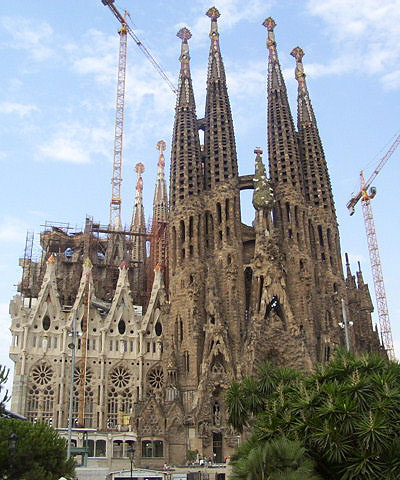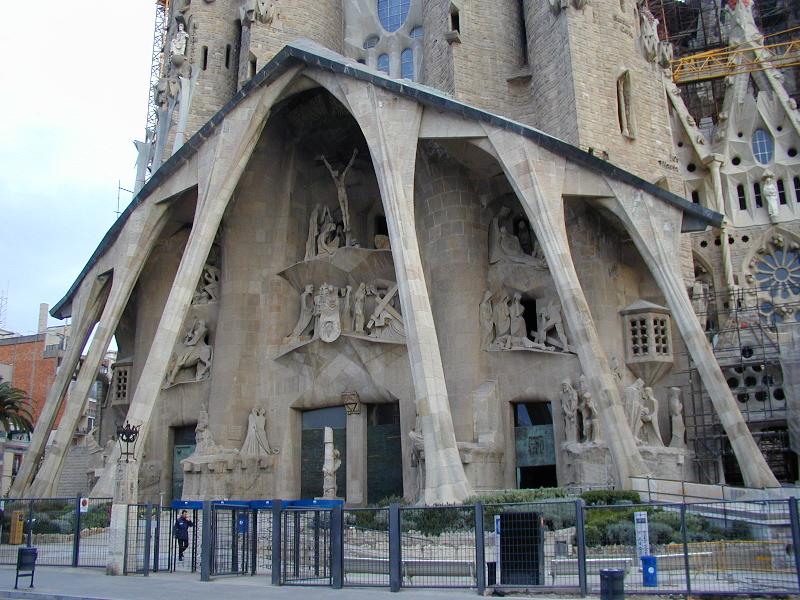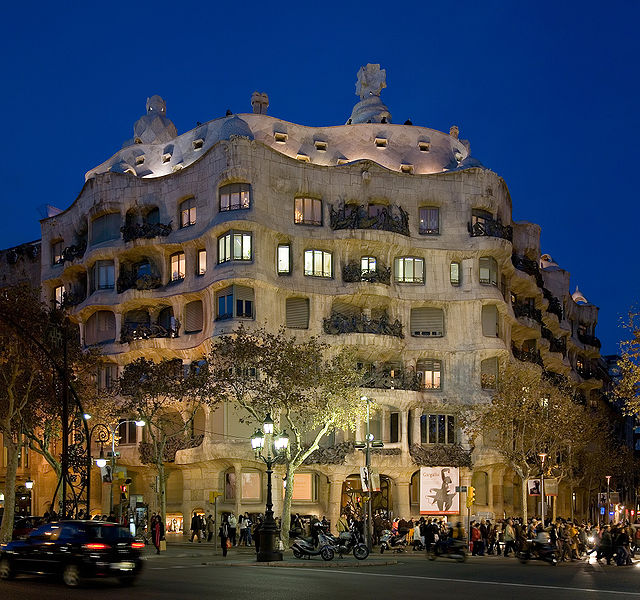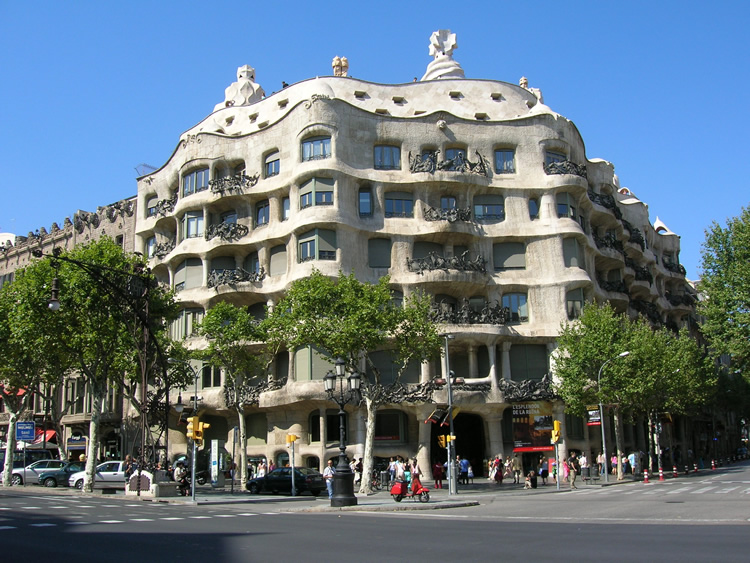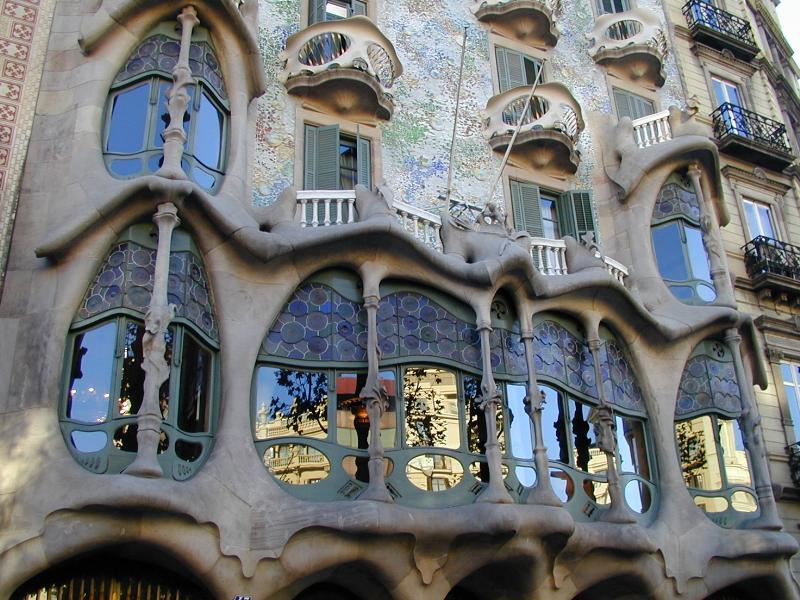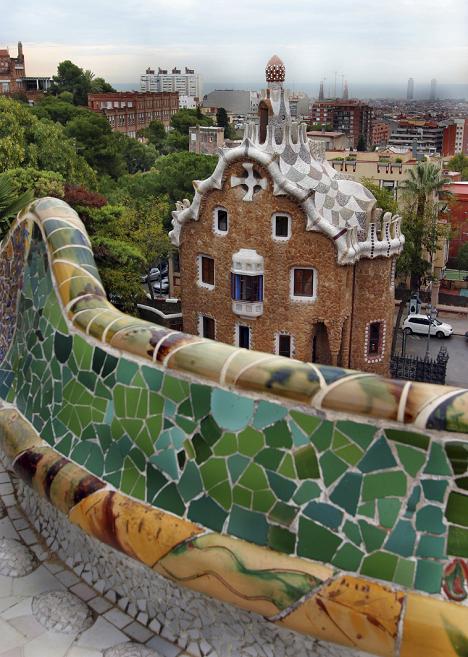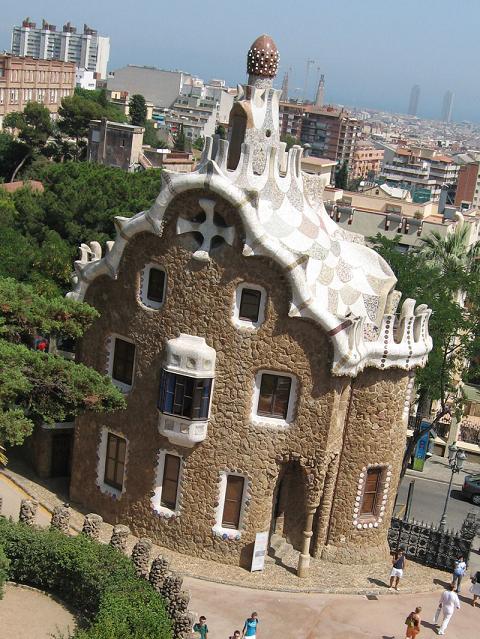<Back to Index>
- Philosopher Willard Van Orman Quine, 1908
- Architect Antoni Plàcid Guillem Gaudí i Cornet, 1852
- President of Indonesia Bacharuddin Jusuf Habibie, 1936

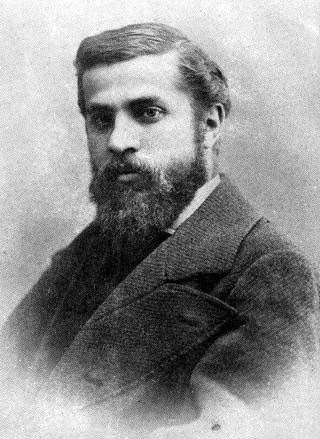
Antoni Plàcid Guillem Gaudí i Cornet (25 June 1852 – 10 June 1926) – in English, normally referred to by the Spanish translation of his name, Antonio Gaudí – was a Spanish Catalan architect who belonged to the Modernist style (Art Nouveau) movement and was famous for his unique and highly individualistic designs.
Antoni Gaudí was born in the province of Tarragona in southern Catalonia on 25 June 1852. While there is some dispute as to his birthplace – official documents state that he was born in the town of Reus, whereas others claim he was born in Riudoms, a small village 3 miles (5 km) from Reus, –
it is certain that he was baptized in Reus a day after his birth. The
artist's parents, Francesc Gaudí Serra and Antònia Cornet
Bertran, both came from families of coppersmiths. During
his youth, Gaudí suffered many times from the rheumatic fevers
that were common at the time. This illness caused him to spend much
time in isolation, and it also allowed him to spend lots of time alone
with nature. It
was this exposure to nature at an early age which is thought to have
inspired him to incorporate natural shapes and themes into his later
work. As an architecture student at the Escola Tècnica Superior d'Arquitectura in Barcelona from 1873 to 1877, Gaudí was not particularly outstanding, but did excellently in his 'Trial drawings and projects'. After
five years of work, he was awarded the title of architect in 1878. As
he signed the title, Elies Rogent declared, "Qui sap si hem donat el
diploma a un boig o a un geni: el temps ens ho dirà" ("Who knows
if we have given this diploma to a nut or to a genius. Time will tell.") The
newly-named architect immediately began to plan and design and would
remain affiliated with the school his entire life. Buildings form the
majority of his works, many of which can be found in Barcelona. Gaudí
was a devout Catholic, to the point that in his later years he
abandoned secular work and devoted his life to Catholicism and his Sagrada Família.
He designed it to have 18 towers, 12 for the 12 apostles, 4 for the 4
evangelists, one for Mary and one for Jesus. Soon after, his closest
family and friends began to die. His works slowed to a halt, and his
attitude changed. One of his closest family members – his niece Rosa
Egea – died in 1912, only to be followed by a "faithful collaborator",
Francesc Berenguer Mestres, two years later. After these tragedies,
Barcelona fell on hard times economically. The construction of La Sagrada Família slowed; the construction of La Colonia Güell ceased altogether. Four years later in 1918, Eusebi Güell, his patron, died. Perhaps
it was because of this unfortunate sequence of events that Gaudí
changed. He became reluctant to talk with reporters or have his picture
taken and solely concentrated on his masterpiece, La Sagrada Família. He spent the last few years of his life living in the crypt of the "Sagrada Familia". On 7 June 1926 Gaudí was run over by a tram.
Because of his ragged attire and empty pockets, many cab drivers
refused to pick him up for fear that he would be unable to pay the
fare. He was eventually taken to a paupers' hospital in Barcelona.
Nobody recognized the injured artist until his friends found him the
next day. When they tried to move him into a nicer hospital,
Gaudí refused, reportedly saying "I belong here among the poor." He died three days later on 10 June 1926, at age 73, half of Barcelona mourning his death. He was buried in the midst of La Sagrada Família. Although
Gaudí was constantly changing his mind and recreating his
blueprints, the only existing copy of his last recorded blue prints was
destroyed by the anarchists in 1938 during the Spanish Civil War.
This has made it very difficult for his workers to complete the
cathedral in the fashion Gaudí most likely would have wished. It
is for this that Gaudí is known to many as "God's Architect". La Sagrada Família is now being completed, but differences between his work and the new additions can be seen. As
of 2007, completion of the Sagrada Familía is planned for 2026,
which would be the 100th anniversary of Gaudí's death. It is
currently at the center of a row over the proposed route of a
high-speed rail tunnel that would pass nearby the house, approximately
thirty meters below. Supporters
of the tunnel point to many successful tunneling projects under city
centers. Detractors cite a metro tunnel in Barcelona’s Carmel district
that collapsed and destroyed an entire city block on the February 1,
2005. The route passes nearby to some of Gaudí's other works, Casa Batlló and Casa Milà, although deep underground. Gaudí's first works were designed in the style of gothic architecture and traditional Catalan architectural modes, but he soon developed his own distinct sculptural style. French architect Eugene Viollet-le-Duc,
who promoted an evolved form of gothic architecture, proved a major
influence on Gaudí. The student went on to contrive highly
original designs – irregular and fantastically intricate. Some of his
greatest works, most notably La Sagrada Família, have an almost hallucinatory power. Gaudí spent ten years working on studies for the design of La Sagrada Família and
developing a new method of structural calculation based on a model
built with cords and small sacks of lead shot. The outline of the
church was traced on a wooden board (1:10 scale), which was then placed
on the ceiling of a small house next to the work site. Cords were hung
from the points where columns were to be placed. The sacks of pellets,
weighing one ten-thousandth part of the weight the arches would to
support, were hung from each catenaric arch formed by the cords.
Photographs were then taken of the resulting model from various angles.
When the photographs were turned upside-down, the lines of tension
formed by the cords and weights revealed the lines of pressure of the
compressed structure. This is one of the ways that Gaudí
obtained natural forms in his work. The
same expressive power of Gaudí's monumental works exists in his
oddly graceful chairs and tables. Gaudí's architecture is a
total integration of materials, processes and poetics. His approach to
furniture design exceeded structural expression and continued with the
overall architectural idea. Gaudí,
throughout his life, studied nature's angles and curves and
incorporated them into his designs and mosaics. Instead of relying on
geometric shapes, he mimicked the way men stand upright. The hyperboloids and paraboloids he
borrowed from nature were easily reinforced by steel rods and allowed
his designs to resemble elements from the environment. Gaudí was
so inspired by nature, he says, because: "Those who look for the laws of Nature as a support for their new works collaborate with the creator." Because of his rheumatism, the artist observed a strict vegetarian diet, used homeopathic drug therapy, underwent water therapy, and hiked regularly. Long walks, besides suppressing his rheumatism, further allowed him to experience nature.
Gaudí's originality was at first ridiculed by his peers. Indeed, he was first only supported by the rich industrialist Eusebi Güell. His fellow citizens referred to the Casa Milà as La Pedrera ("the quarry"), and George Orwell, who stayed in Barcelona during the Spanish Civil War,
admittedly loathed his work. As time passed, though, his work became
more famous. He stands as one of history's most original architects. Gaudí, among others, promoted the Catalan movement for regaining sovereignty from Spain by incorporating elements of Catalan culture in his designs. Gaudí was involved in politics since he supported the Catalanist political party Regionalist League. For example, when in 1924 Spanish authorities (ruled by the dictator Primo de Rivera) closed Barcelona's churches in order to prevent a nationalist celebration (11 September, National Day of Catalonia), Gaudí attended Saints Justus and Pastor's church and was arrested by the Spanish police for answering in Catalan.
